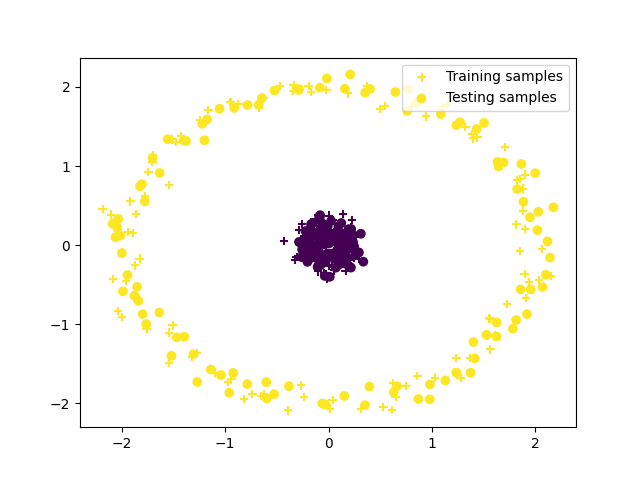Note
Go to the end to download the full example code.
Clustering circles with kernel RIM¶
We show here a simple dataset consisting in two centred circle that can be challenging for some clustering algorithms. We solve this case using the kernel RIM algorithm. This algorithm fits a logistic regression on the kernel matrix derived from the dataset.
from matplotlib import pyplot as plt
from sklearn import datasets
from sklearn import metrics
from gemclus.linear import KernelRIM
Draw samples for the circle dataset¶
Training clustering model¶
model_kernel = KernelRIM(n_clusters=2, base_kernel="rbf", reg=0, random_state=0)
y_pred = model_kernel.fit_predict(X)
print(f"ARI = {metrics.adjusted_rand_score(y, y_pred)}")
ARI = 1.0
Show predictions on similar samples¶
# Create a novel set of samples and cluster them
new_X, new_y = datasets.make_circles(n_samples=200, noise=noise, factor=factor, random_state=1)
new_X = (new_X-mean)/std
new_pred = model_kernel.predict(new_X)
print(f"ARI = {metrics.adjusted_rand_score(new_y, new_pred)}")
plt.scatter(X[:, 0], X[:, 1], c=y_pred, marker="+", label="Training samples")
plt.scatter(new_X[:, 0], new_X[:, 1], c=new_pred, marker="o", label="Testing samples")
plt.legend()
plt.show()

ARI = 1.0
Total running time of the script: (0 minutes 0.360 seconds)